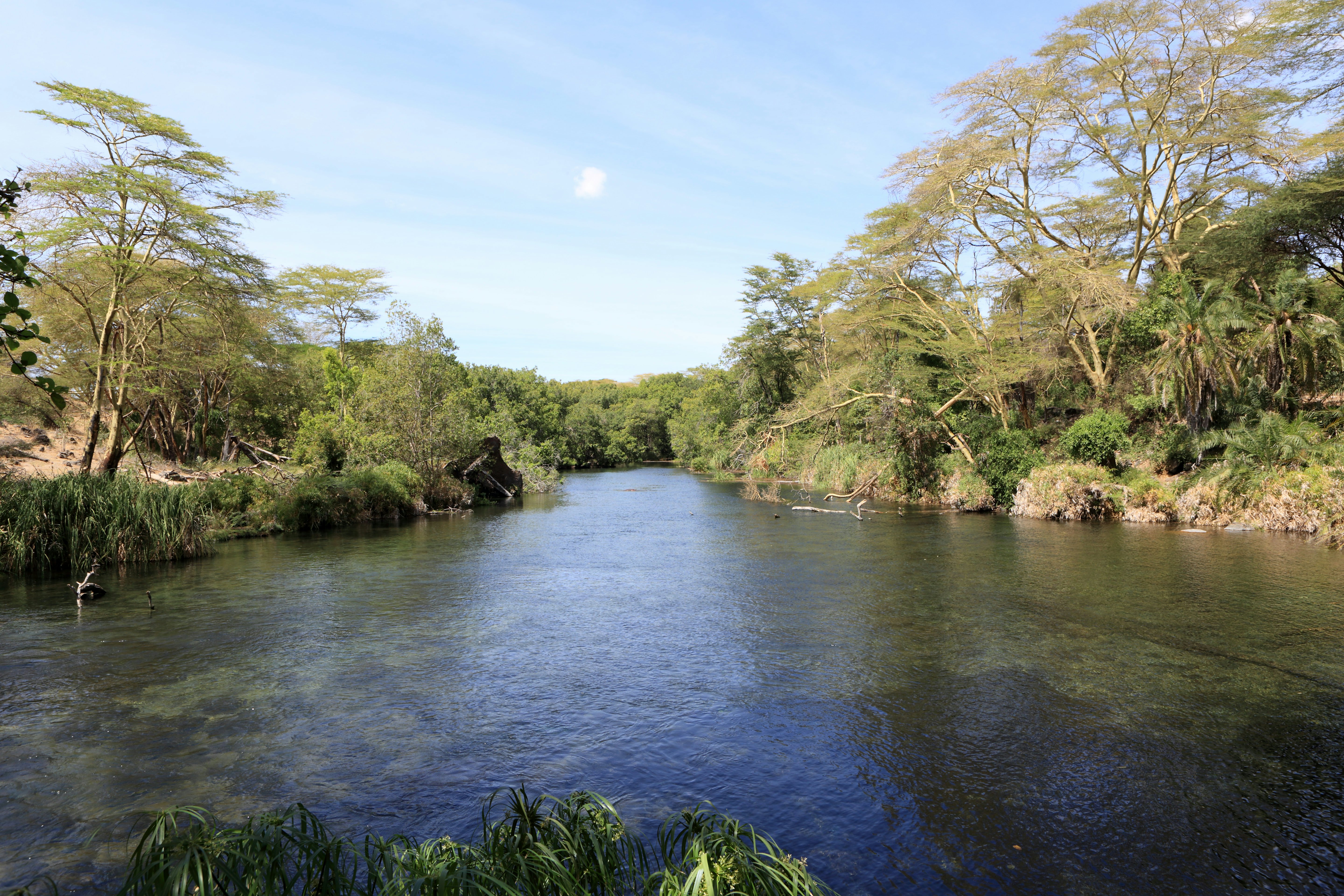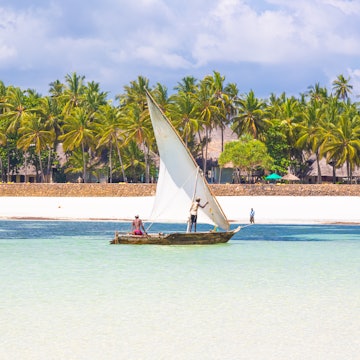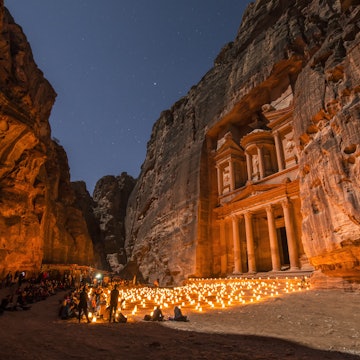

Kenya's diverse natural landscape is what draws visitors from all over the world © George Clerk 176251 / Getty Image
It’s the snow-capped mountain almost on the equator and within sight of harsh deserts. It’s the lush, palm-fringed coastline of the Indian Ocean, it’s the Great Rift Valley that once threatened to tear the continent asunder, and it’s the dense forests reminiscent of the continent’s heart. In short, Kenya is a country of epic landforms that stir our deepest longings for this very special continent. Here are our 10 favorite natural wonders.
Editor's note: Please check the latest travel restrictions before planning any trip and always follow government advice.
Mt Kenya
Africa’s second-highest mountain is also one of its most beautiful. Here, mere minutes from the equator, glaciers carve out the throne of Ngai, the old high god of the Kikuyu. To this day the tribe keeps its doors open to the face of the sacred mountain, and some still come to its lower slopes to offer prayers. Mt Kenya also has the rare honor of being both a Unesco World Heritage Site and a Unesco Biosphere Reserve.
In the past, 12 glaciers wore Mt Kenya down to 17057 feet worth of dramatic remnants, but today it's the ice itself that is under threat, disappearing under increased temperatures and taking with it crystalline caves and snowy crevasses.

Lake Turkana
Amid the deserts and horizonless tracts that characterize so much of Kenya's north, Lake Turkana glitters like a jade-and-turquoise mirage. Rising from its waters is Teleki, one of the world's most perfectly shaped volcanic cones, while the shores are dotted with dusty and utterly intriguing villages, such as Loyangalani, that are home to the beguiling mix of traditional peoples – Turkana, Samburu, Gabbra, El-Molo – who call this isolated corner of Africa home. And there are crocodiles here. Lots of them.
Kakamega Forest National Reserve
Paths lace the Kakamega Forest and offer a rare opportunity to ditch the safari 4WD and stretch your legs. This ancient forest is home to an astounding 330 bird species, 400 butterfly species and seven different primate species. Like all rainforests, though, the trees themselves are the chief attraction here, and in the forest gloom you’ll stumble upon the botanical equivalent of beauty and the beast: delicate orchids and parasitic figs that strangle their hosts as they climb towards the light.

Watamu
Kenya’s Indian Ocean coast is one of Africa’s prettiest shores and Watamu is one of its prettiest beaches. Sitting roughly halfway between Mombasa and Lamu, it's a fine base for exploring the Kenyan coast with its long stretches of white sand, translucent waters and coves sheltered by palm trees. Plenty of water sports (from fishing to windsurfing), traces of the coast's African heritage.
Masai Mara
Dream of Africa and chances are that you dream of the Masai Mara. This huge expanse of gently rolling grassland – speckled with flat-topped acacia trees and trampled by massive herds of zebras and wildebeest – is the ultimate African cliché. But for once the reality lives up to the image and the Masai Mara, which comprises not just the famous reserve but also around a dozen community conservancies, several group ranches and numerous Maasai villages, is for many people not just the highlight of their Kenyan adventure, but the very reason they came in the first place.

Amboseli National Park
Amboseli belongs in the elite of Kenya’s national parks, and it’s easy to see why. Its signature attraction is the sight of hundreds of big-tusked elephants set against the backdrop of Africa’s best views of Mt Kilimanjaro (19341 ft).
Africa’s highest peak broods over the southern boundary of the park, and while cloud cover can render the mountain’s massive bulk invisible for much of the day, you’ll be rewarded with stunning vistas when the weather clears, usually at dawn or dusk.
Apart from guaranteed elephant sightings, you’ll also see wildebeest and zebras, and you’ve a reasonable chance of spotting lions and hyenas. The park is also home to over 370 bird species. And with chances to delve a little deeper into the world of wildlife conservation, it all adds up to one of Kenya’s premier wildlife experiences.
Nairobi National Park
Nairobi National Park (at 45 sq mi, one of Africa’s smallest) has abundant wildlife that can, in places, be viewed against a backdrop of city skyscrapers and planes coming in to land – it's one of the only national parks on earth bordering a capital city. Remarkably, the animals seem utterly unperturbed by it all.
The park has acquired the nickname “Kifaru Ark”, a testament to its success as a rhinoceros (kifaru in Kiswahili) sanctuary. The park is home to the world's densest concentration of black rhinos (more than 50), though even the park's strong antipoaching measures couldn't prevent poachers from killing one of the rhinos in August 2013 and then again in January 2014. They were the first such attacks in six years, and reflect the current sky-high Asian black-market price for rhino horn.

Diani Beach
With a flawless, long stretch of white-sand beach hugged by lush forest and kissed by surfable waves, it's no wonder Diani Beach is so popular. This resort town scores points with a diverse crowd: party people, families, honeymooners, backpackers and water-sports enthusiasts.
Kisite Marine National Park
Off the south coast of Wasini, this gorgeous marine park, which also incorporates the Mpunguti Marine National Reserve and the two tiny Penguti islands, is one of the best in Kenya. The park covers 11 sq mi of pristine coral reefs and offers colorful diving and snorkeling, with frequent dolphin and turtle sightings. The marine park is accessible by dhow tour from Diani Beach or private boat hired in Wasini (per person from KSh2500 to KSh3000).
The best time to dive and snorkel is between October and March. Diving and snorkeling in June, July and August can mean poorer visibility and rougher seas, though the weather is changeable. During the monsoon season, you can snorkel over the coral gardens.

Mzima Springs
Mzima Springs is an oasis of green in the west of the park that produces an incredible 660 million gallons of fresh water a day. The springs, whose source rises in the Chyulu Hills, provides the bulk of Mombasa’s fresh water. A walking trail leads along the shoreline. The drought in 2009 took a heavy toll on the springs’ hippo population; the population is stable at around 20 individuals. There are also crocodiles and a wide variety of birdlife.
There’s an underwater viewing chamber, which gives a creepy view of thousands of primeval-looking fish. Be careful here though, as neither hippos nor crocs are always confined to the water. Impressive it may all be, but it's not quite up to the hyperbole of the inscription at the entrance to the site and which claims Mzima Springs to be “undoubtedly the greatest attraction in Tsavo West National Park, if not the whole country.”
You might also like:
Climbing, trekking, kitesurfing and more: Kenay beyond safaris
The wildlife conservation efforts that are saving Amboseli's safari riches
Kenya's 10 unmissable experiences














